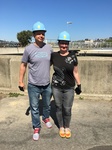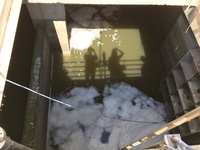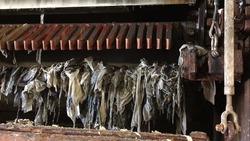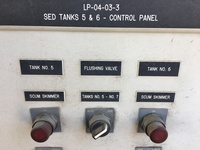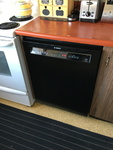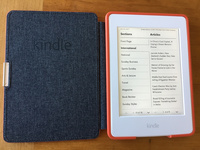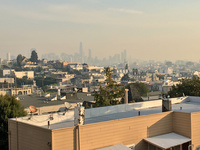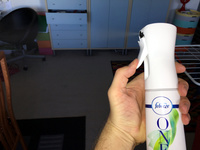 |
| Angelika/Mike Schilli |
|
|
|
Michael What happens after we flush the toilet? To find out, we booked a tour of the "San Francisco Public Utilities Commission Wastewater Treatment Plant" in the Bayview district at the end of August. Promptly at 9:45 on a Saturday morning, we had to report at the visitor entrance wearing long pants and closed shoes (!), and after an hour of theory, we were immediately equipped with helmets and latex gloves.
San Francisco has what's called a "combined sewer system," which means it directs toilet flushes and other household wastewater together with rainwater that runs into the sewers through the same pipe to one of the city's three wastewater treatment plants.
There, machines first filter out non-decomposable parts from the wastewater, and we were informed that so-called "flushable wipes," or wet toilet paper, contrary to what the packaging claims, do not decompose in the wastewater. Instead, they are fished out at the sewage treatment plant along with other solids by large rakes and stored in a landfill.
What remains is foul-smelling brackish water redolent of excrement, whose sludge content slowly settles to the bottom, where it is then removed and chemically thickened until it has about the consistency of hot asphalt. It is subsequently used as fertilizer on fields where no food is grown. The water is then further purified by microorganisms, disinfected with chlorine, and pumped out through a pipe extending about 50 meters into the San Francisco Bay. About 80% of San Francisco's wastewater is thus returned to the cycle, with the remaining 20% undergoing a similar process (but without chlorine) into the Pacific Ocean.
Americans often affectionately refer to excrement as "Poop" or "Number Two" or "#2". The latter is used so that little kids can differentiate between pee ("Number One") and poop ("Number Two"). The slogan of the sewage treatment plant was quite catchy, proclaiming that the brown sludge from the sewer is the city sewage plant's top priority, as, right? "Your #2 is our #1", which was actually emblazoned on stickers that workers proudly wore on their helmets.
During heavy rain, especially in surrounding cities with smaller facilities like Pacifica, it can happen that the sewer pipes and the additionally installed catch basins fill up, and then there's no time left to clean the sludge, which then goes directly into the Pacific Ocean without further ado. This also explains the warning signs that appear on the beach after heavy rains, prohibiting swimming. I've always wondered where that came from. Of course, the surfers there don't take any notice of warning signs; come what may, they go into the water, as the waves don't surf themselves.

